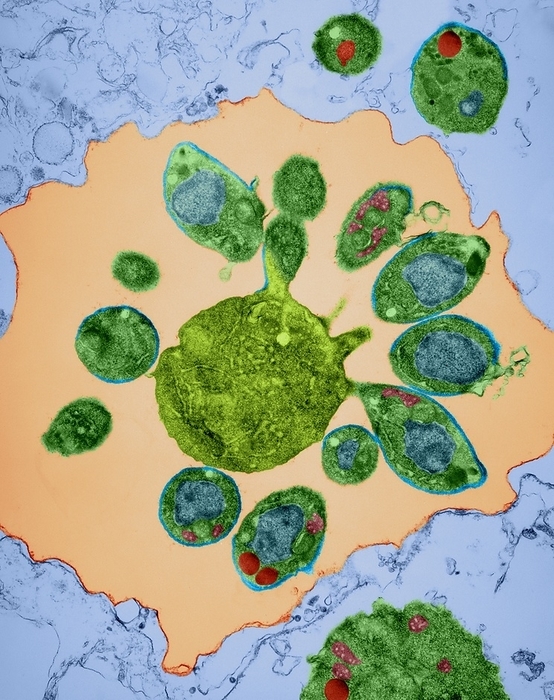
RM
Plasmodium falciparum, TEM
Plasmodium falciparum plasmodial schizont, or segmenter, in an erythrocyte (red blood cell) after completion of division, coloured transmission electron micrograph (TEM). A residual body is left over after division (yellow-green). The red blood cell has lysed and only a ghost red blood cell membrane (no cytoplasm) is seen surrounding the new merozoites that are just being released. Free merozoites can be seen outside the ghost red blood cell membrane. The cytoplasm of the merozoites contains a nucleus (blue), mitochondria (pink) and rhoptry bulbs (red). Malaria is caused by Plasmodium spp., protozoa. It is spread to humans by Anopheles species mosquitoes. The plasmodial parasite reproduces asexually in red blood cells significantly destroying many of them. Release of mature Plasmodium merozoites results in further infection and produces bouts of shivering fever (paroxysms) and sweating that may be fatal. Magnification: x2,810 when shortest axis

More
Top Categories
